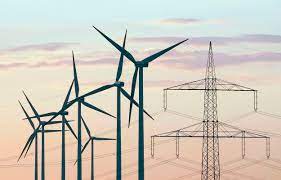Pakistan’s energy sector has always been a Gordian knot for energy planners. Energy policies made in the early 1990s were based on short-term energy demand forecasts, missing the critical sustainability element in the planning. Over the years, policy-based reliance on thermal power generation through imported crude has worsened the crisis, sending the country into a never-ending circular debt trap. An answer to this crisis is long-term strategic energy planning that includes much-needed sustainable development elements through a balanced energy mix.
Currently, Pakistan generates 58.4pc of the total energy from thermal sources. Almost 2/3rd of dependency on thermal power forces the government to import expensive fossil fuels from volatile international energy markets. The fluctuating nature of these markets, especially the LNG spot markets makes it a poor choice for countries like Pakistan to create energy depending on it.
Similarly, the boom and bust cycle of the crude oil market makes it impossible for a country like Pakistan to forecast its energy-economy tradeoff by projecting long term energy sustainability. Its current example is the Russian-Ukraine conflict, which has skyrocketed crude prices in the international markets. The only answer to this complexity is to work out the successful execution of the alternative and renewable energy plans to integrate non-fossil fuel-based energy sources into the energy mix of the country.
Over the last five years, Pakistan has significantly increased its energy generation capacity in the short and medium-term energy infrastructure development projects under CPEC. The installed capacity makes less difference in meeting the energy demand if the energy sector is financially bleeding. The cash flow deficit in the system is continuously leading to the accumulation of circular debt, making it impossible for the government to pay all the liabilities of the generation companies. Currently, circular debt amounts to Rs 2.476 trillion, out of which Rs 1.494 trillion is related to power producers, Rs 79 billion for fuel supplies and Rs 904 billion held in Power Holdings Limited.
Capping the circular debt is trickier to fudge. Power sector transmission and distribution (T&D) losses are standing at 17pc despite a policy target of 13.4pc. These losses through non-payment of electricity bills mostly by the domestic sector consumers coupled with power theft force the government to pour hefty subsidies on the energy sector. With the current accumulation pace, circular debt could reach Rs 2.7 trillion by the end of this year. This introduces financial sustainability challenges in the system that makes the energy sector more fragile.
Energy management is further complicated by the duplicity of the management and regulatory bodies. The entire energy sector is managed by multiple specialised companies and regulators that overlook the regulatory and managerial affairs of the energy sector.
Energy management is further complicated by the duplicity of the management and regulatory bodies. The entire energy sector is managed by multiple specialised companies and regulators that overlook the regulatory and managerial affairs of the energy sector. This calls for a more simplified system in which energy management and regulation form a pyramidal structure with a single body overlooking all the regulatory and managerial affairs. Such a system will integrate the working of bodies like OGRA and NEPRA which are working on a similar model of regulating the energy sector. Similarly, instead of duplicity in the energy policy and planning, a unified energy planning authority can be developed to take the lead in indicative energy generation, capacity expansion, transmission, and distribution planning.
The erstwhile PTI government has taken a similar step by introducing integrated energy planning in the country. Under the Planning Commission of Pakistan, an Energy Planning and Resource Centre (EPRC) has been set up to study the future energy generation and demand trends as well as make a sustainable road map for future energy planning in the country. Once EPRC comes up with a long-term sustainable energy plan, the energy sector could be steered in the right direction.
The hefty burden on the exchequer and uncertainties associated with the fossil fuel markers are pushing countries to explore alternative and renewable energy production. Pakistan rolled out its Alternative and Renewable Energy (ARE) Policy in 2019 to reduce its dependence on thermal energy production. Presently, only 5pc of the total energy production is through the ARE sources. The policy foresees a target of 60pc ARE production by 2030, with the addition of hydel energy as part of the ARE mix. The ARE policy, even though it came with a delay, is a much-needed step to change the energy mix of Pakistan by 2050. However, the inclusion of hydel energy in the ARE mix can be debated. Its inclusion will overshadow work on the other renewable energy sources including solar and wind power, making the policy less effective in the longer run.
For long term energy sustainability, the policies need to promote indigenous ownership and production of ARE by providing incentives to power producers through the lenient import regulations on machinery such as solar panels and wind turbines. Increasing investment in the ARE production sources will also attract FDI for local production of solar panels and wind turbines. Pakistan being an agrarian country has a lot of potential for the production of biofuels, but presently the technology in the country is limited to the R&D sector only.
A sustainable energy market calls for sustainable policies that have far-reaching positive implications on the energy markets. Though in the previous years, Pakistan has shown excellent progress in solving the energy crisis through strategic energy mapping, the policies need to be supported by their timely implementation and efficient execution. As a matter of fact, Pakistan has always been an excellent policymaker but lagged in the execution phase. The energy sector is a test case for the new government to loosen the Gordian knot.























